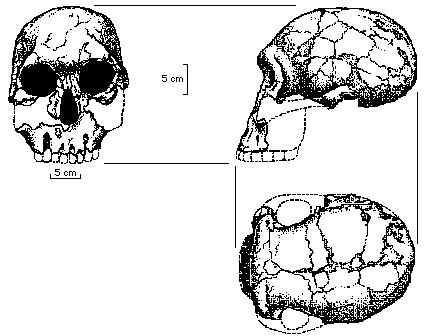
Skeletons in your closet 10 - Homo habilis

The scientific name for this species means handy man. H. habilis is still a problematic species designation. Although initially discovered at Olduvai and named by Louis Leakey in the 1960's, few paleoanthropologists were willing to accept a new species of hominid at the time, let alone one that was presumably in the same genus as ourselves. Richard Leakey's work at Lake Turkana has also resulted in the discovery of what appears to be a similar individual. In fact the type specimen from Olduvai is in such poor condition, that we have used the most complete specimen (KNMER-1470) from Turkana for this illustration. Living between 1.9 and 1.6 mya, H. habilis was a contemporary of the robust australopithecines in East Africa.
Because so few pieces of these individuals have been recovered to date, it seems likely that H. habilis will remain a controversial designation for some time to come. Although it is more advanced in most respects compared to the gracile australopithecines, it still seems to have enough primitive characteristics in common with them that it may well represent variation within the australopithecines rather than a completely separate genus and species. Only continued research will settle this dispute between the Leakeys and the rest of the paleoanthropological community. In general, morphological features indicate H. habilis was an efficient biped, and may have been capable of rudimentary speech. While this species is associated with the Oldowan tool tradition, it is believed to have foraged for plant foods and scavenged meat.
| |
|
|